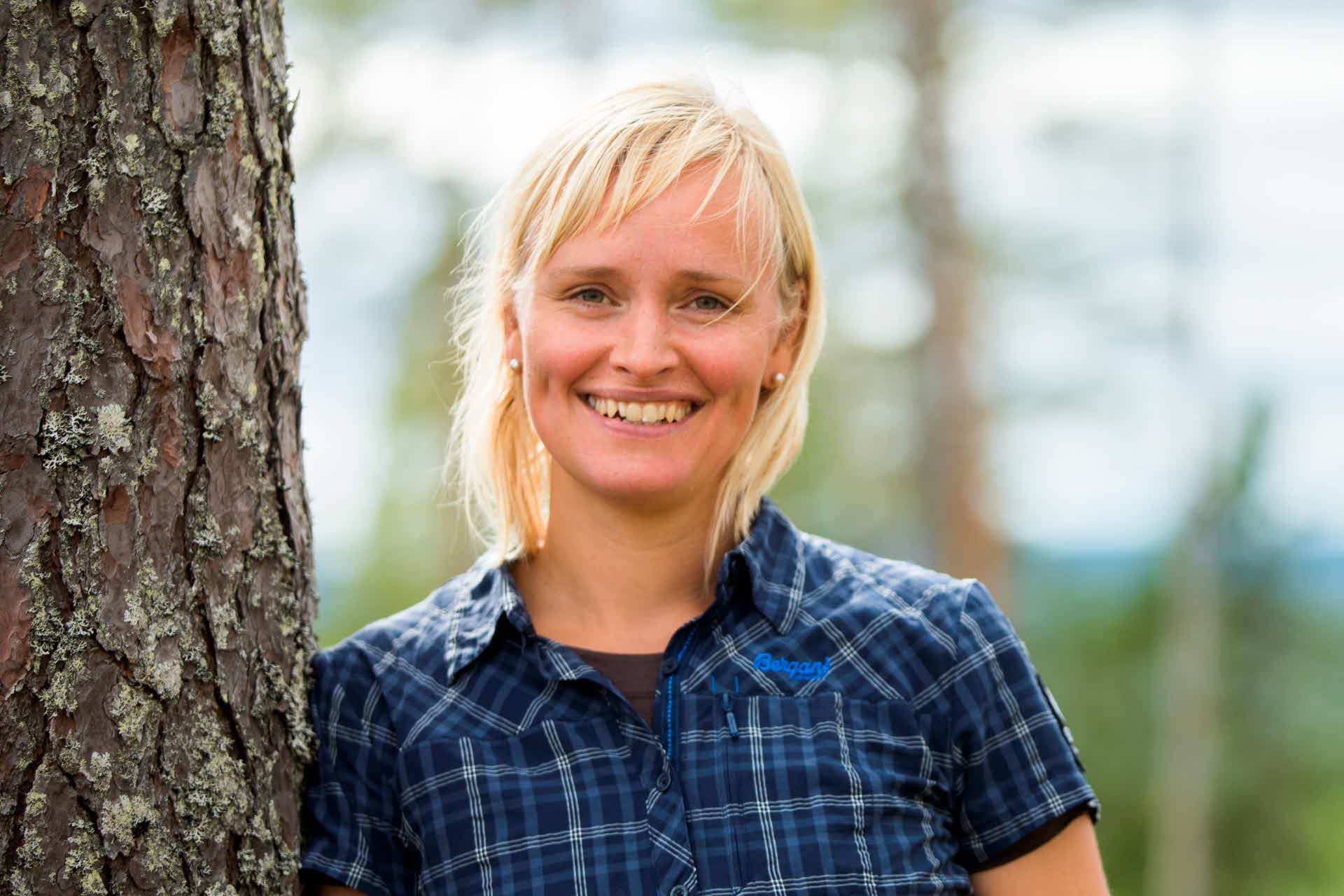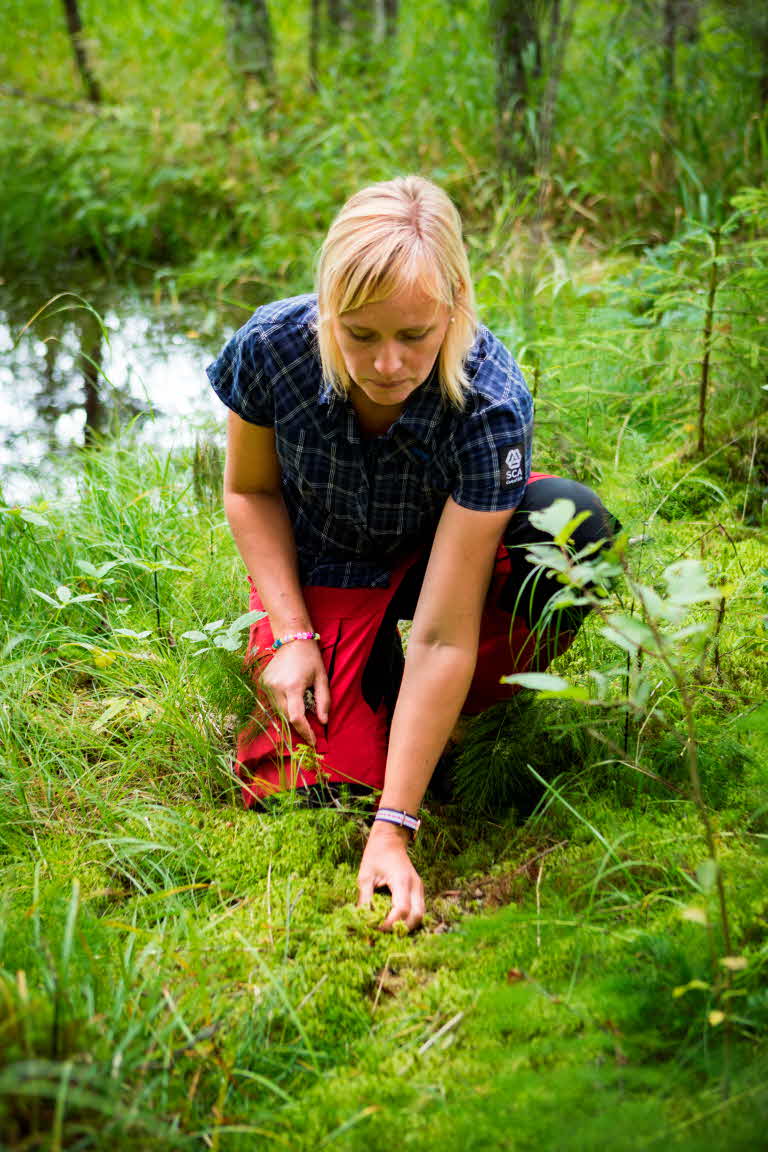
- MEDIA
- THE ECOLOGICAL PERSPECTIVE
The ecological perspective
- Article
The aim of ecological landscape management is to preserve and develop biodiversity in forests. This is a long-term endeavour that’s evolved considerably over the years. “We know a lot more about ecology and nature conservation now than in the early days of the forest industry,” says Anna Cabrajic, forest ecologist at SCA.
My job involves developing instructions and procedures so that we choose the right areas to fell, ecologically speaking.
Anna Cabrajic, forest ecologist at SCA, is enjoying a cup of coffee with a few of her colleagues. They're chatting about the Violet Copper butterfly, which is found in hayfields, forest glades and areas in the mountains that are underpinned by calcareous soil. They discuss how a forest site in eastern Jämtland should be managed in order to enhance living conditions for this red-listed butterfly as much as possible. This involves measures such as promoting vegetation favoured by the butterfly and ensuring that it’s provided with ways to move between the wetland areas that allow it to thrive. A kind of green road network for butterflies, you might say.
“Yes, something along those lines. Species need to be able to move around, and there are things we can do to link areas with high conservation values, or areas that are vital for this butterfly, for instance,” says Anna Cabrajic.
Consideration for conservatuin values

She works on ecological landscape management, a tool for combining forestry with nature conservation and protecting biodiversity. This job includes making an inventory of the forest and mapping the conservation values – the number of old trees, dead wood or untouched forest, for example – and then deciding what needs to be taken into consideration and whether the area should be managed, and if so how.
The right method in the right place, according to Anna’s summary, describing a greyscale of measures.
“The forests with the highest conservation values are what we refer to as voluntary allocations. These are allowed to develop freely or are managed solely to promote their conservation values,” she says.
Variation important for forests
High conservation values often go hand in hand with the variation occurring naturally in an untouched forest. A varied forest provides good living conditions for many species of fungi, lichens, plants and animals, all of which have different requirements and adjustments to their surroundings.
In forests with moderate conservation values, forestry is combined with continuity forestry, measures that preserve or develop these values. Adapted consideration is applied in forests with certain, more limited conservation values, which may mean that felling is adjusted to the needs of particular species by saving and promoting deciduous trees.
Other forest areas are managed by means of an approach known as general consideration, where forest is saved adjacent to watercourses and marshes, and older trees and dead wood are allowed to remain in place. This is also known as traditional forestry and is the most common method applied in Sweden.
“As a company, our primary task is to supply timber to industry. The right range of timber, of the right quality, at the right time, and so forth. I’m working on developing instructions and procedures so that we select the right areas to fell, ecologically speaking,” says Anna Cabrajic.
Large landowner decisions close
She grew up in the country, has always been convinced of the importance of environmental issues and has spent a great deal of time in the forest. She also showed an interest in other ecosystems, such as the sea, during her university days, but she headed back to the forest when doing her PhD.Since then, Anna Cabrajic has been working on forestry issues at public authorities such as the Swedish Forest Agency and the County Administrative Board, and now works for SCA, Europe’s largest private forest owner.
“I have the opportunity to be directly involved in managing conservation values. That’s my primary motivation for working for a large landowner. I have more control here,” she says.
About SCA
SCA is the biggest private owner of forests in Europe with 2.7 million hectares of forest land, of which 2.1 million hectares are productive. The company’s long-term strategy states that 7 per cent of its productive forest land area should comprise voluntary allocations, 3 per cent should be managed by means of continuity forestry, and a further 3 per cent should be managed using adapted consideration measures. Traditional forestry using general consideration measures is applied for the remaining 87 per cent.